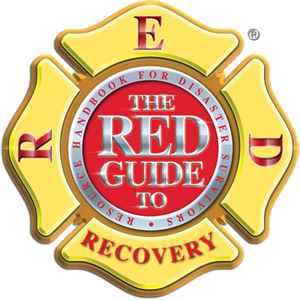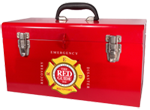Each Toolbox DOWNLOAD includes:
- Cyanide Residues in Fire Damaged Buildings
- The Greatest Threats to Disaster Recovery
- Beware of Using Ozone After a Fire
- Soot, Char, & Ash: It’s More Toxic Than You Think
- Overhead & Profit – The 10 & 10 Myth
- Dioxins - The Most Hazardous Substance in Structure Fire Environments
- What Do You Mean You Still Smell Smoke?!
- Lead Contamination in Structure Fires
- The Trilemma of Insurance Claim Disputes
- 12 Tips to Protect Yourself After a Fire
- Hazards of Smoke - Protect Your Health After a Fire
- Restoring Smoke Damaged Textiles – What Does Clean Mean?
- Addressing Toxic Smoke Particulates in Fire Restoration
- Quick Start Guide
- Dwelling Inventory of Features and Fixtures
- How to Secure Your Property & Home
- Emergency Plan and Contact Information Form
- Emergency Contact Card
- Vehicle Emergency Kit
- Homeowner Preparedness Logbook
- Lost Pet Poster Template
- Home Improvement Contract Checklist and Tips
- Contractor Questionnaire and Checklist
- Public Insurance Adjuster Questionnaire and Tips
- Restoring Utilities After a Disaster
- Fire Damage Warning Sign
- Disaster Recovery for Renters
- Protect Your Belongings and Identity After a Disaster!
DOWNLOAD THE ALL-IN-ONE RED GUIDE TOOLBOX – FOR FREE!
-

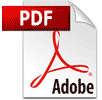 Cyanide Residues in Fire Damaged Buildings
Cyanide Residues in Fire Damaged BuildingsDuring a structure fire, toxic gases, acids, VOC’s, and a vast array of other hazardous chemicals are created. These byproducts of incomplete combustion make up the composition of smoke, soot, and particulate matter. Smoke also contains moisture vapor that will condense on cool surfaces as the smoke migrates away from the fire.
-
 The Greatest Threats to Disaster Recovery
The Greatest Threats to Disaster RecoveryRecovering from a disaster, especially if you have lost your home, is one of the most difficult and challenging experiences you will ever experience. If you have never personally experienced a disaster event, the recovery process is like trying to navigate a minefield without a map and making one wrong move or taking one wrong step can lead to catastrophe.
-
 Beware of Using Ozone After a Fire
Beware of Using Ozone After a FireIn the fire restoration industry today, many practitioners use ozone generators as one of their primary means to neutralize smoke odor. Although ozone may be effective to some degree in neutralizing odors, many experts disagree on its effectiveness and whether the risks outweigh the rewards.
-
 Soot, Char, & Ash: It’s More Toxic Than You Think
Soot, Char, & Ash: It’s More Toxic Than You ThinkWhen you think of charred wood, ash left behind after a wildfire, or soot, you might think that they are little more than harmless byproducts of incomplete combustion. Afterall, haven’t people cooked their food and kept warm by burning wood in their stoves and fireplaces for millennia?
Read More » Soot, Char, & Ash: It’s More Toxic Than You Think
-
 Overhead & Profit – The 10 & 10 Myth
Overhead & Profit – The 10 & 10 MythIn the restoration industry today, the cost of doing business and the ever-changing market of how sales are generated is getting more and more challenging. One thing that hasn’t changed is the 20% markup factor for overhead and profit, commonly known as the “10% & 10%” O&P. No one really knows who came up with the 10% & 10% concept, but most restoration contractors will agree that these allowances, especially the 10% allowance to cover overhead expenses are for the most part outdated and unrealistic.
-
 Dioxins - The Most Hazardous Substance in Structure Fire Environments
Dioxins - The Most Hazardous Substance in Structure Fire EnvironmentsIn the fire restoration industry today, very little attention is given to the toxicity of volatile organic compounds (VOC’s), heavy metals, or the composition of particulate matter and smoke residues. Tens of thousands of toxic chemicals, gases, acids, and hazardous substances are created in structure fire settings.
Read More » Dioxins - The Most Hazardous Substance in Structure Fire Environments
-
 What Do You Mean You Still Smell Smoke?!
What Do You Mean You Still Smell Smoke?!During a structure fire, heat and pressurized smoke can permeate the air, infiltrate walls, ceiling cavities, and attic spaces, and find its way anywhere air can travel. After the fire is extinguished, porous materials begin the process of off-gassing and releasing volatile organic compounds (VOC’s). These odors can last for years if the affected materials are not properly cleaned.
-
 Lead Contamination in Structure Fires
Lead Contamination in Structure FiresOn April 15, 2019, fire broke out beneath the roof of the Notre-Dame de Paris Cathedral in Paris. Over 400 firefighters fought the blaze, which grew uncontrollably and consumed approximately two thirds of the roof structure, including the 300-foot wooden spire. This white paper provides information about the threat from lead fumes and fallout from a fire that burns lead.
-
 The Trilemma of Insurance Claim Disputes
The Trilemma of Insurance Claim DisputesWhen a dispute arises over a property damage claim, policyholders need to carefully weigh their options when it comes to getting their claim resolved.
-
 12 Tips to Protect Yourself After a Fire
12 Tips to Protect Yourself After a FireDuring a wildfire, innumerable toxic chemicals, poisonous gases, heavy metals, and other toxins are generated by the materials, household products, and vegetation that burns. These contaminants fill the air, become part of the ash, and are extremely dangerous to your health if inhaled or come in contact with your skin.
-
 Hazards of Smoke - Protect Your Health After a Fire
Hazards of Smoke - Protect Your Health After a FireAfter a fire, you need to be aware of the toxic nature of the smoke, odor, and soot left behind. Although the structural stability of your home may be safe to re-enter, there are other hazards, many of which are invisible that may pose a serious threat to your health.
Read More » Hazards of Smoke - Protect Your Health After a Fire
-
 Restoring Smoke Damaged Textiles – What Does Clean Mean?
Restoring Smoke Damaged Textiles – What Does Clean Mean?During a structure fire, toxic smoke, volatile organic compounds (VOCs), and particulate matter are generated from the vast array of building materials, contents, and household products that combust. These chemicals mix and interact with each other to create a vast array of carcinogens, poisonous gasses, acids, and other toxins that can cause acute, chronic illnesses.
Read More » Restoring Smoke Damaged Textiles – What Does Clean Mean?
-
 Addressing Toxic Smoke Particulates in Fire Restoration
Addressing Toxic Smoke Particulates in Fire RestorationAfter a fire, tens of thousands of toxic chemicals and gasses are produced from the vast array of materials and products that have burned. This white paper provides compelling information, gleaned from many credible sources that explains the risks and health hazards regarding smoke and suggestions on what you can do to protect yourself and your family from toxic smoke.
Read More » Addressing Toxic Smoke Particulates in Fire Restoration
-
 Quick Start Guide
Quick Start GuidePrint this 2-page guide and keep it with your emergency kit. When the need arises, this guide will help you determine the priority steps you must take care of immediately following a disaster.
-
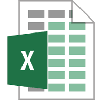 Dwelling Inventory of Features and Fixtures
Dwelling Inventory of Features and FixturesThis pre-populated spreadsheet helps you to recall fixtures and decorative elements in your home structure to expedite the recovery process and maximize the benefits of your insurance coverage.
-
 How to Secure Your Property & Home
How to Secure Your Property & HomeUsing detailed images, this 11-page full color guide describes practical steps for securing doors, windows, and installing fencing to protect your home after a disaster.
-
 Emergency Plan and Contact Information Form
Emergency Plan and Contact Information FormThe Family Emergency Plan is a form you can download, or complete online and print, to keep family, medical and insurance contact information close at hand. Keep a copy of this form with your emergency preparedness kit at home, in your car, and at work.
-
 Emergency Contact Card
Emergency Contact CardWith most people using cell phones as our address book, you need to carry this handy wallet or purse size card with you at all times. Print one for each member of your household, including children. You will have a plan and source of reference when you need it!
-
 Vehicle Emergency Kit
Vehicle Emergency KitIn the event of an emergency, there is a good chance you may be in your car. Be prepared and stock your car with critical supplies! Here is a handy checklist to help you decide what you might need.
-
 Homeowner Preparedness Logbook
Homeowner Preparedness LogbookThis one-page instruction sheet was designed to help you create a one-stop log book or binder to hold all the critical information you will need in case of a disaster. Use this checklist before you need and be prepared in the event of a disaster.
-
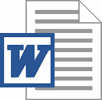 Lost Pet Poster Template
Lost Pet Poster TemplateGet tips you should know about creating an effective lost pet poster. Our free Lost Pet Poster Template will get you started, just update it with your pet’s information.
-
 Home Improvement Contract Checklist and Tips
Home Improvement Contract Checklist and TipsThis 2-page checklist contains vital information you need to know before you sign a contract for improvement or repairs to your home.
-
 Contractor Questionnaire and Checklist
Contractor Questionnaire and ChecklistOur free checklist is a great tool to help you select a qualified contractor and includes questions you need to ask before hiring a contractor, and recommendations to protect yourself from picking the wrong people to work in or on your home.
-
 Public Insurance Adjuster Questionnaire and Tips
Public Insurance Adjuster Questionnaire and TipsIf you are considering hiring a public adjuster, there are a few things you may want to consider before you sign a contract. See examples of how a public adjuster works, a list of top 10 tips, and questions you must ask before hiring!
Read More » Public Insurance Adjuster Questionnaire and Tips
-
 Restoring Utilities After a Disaster
Restoring Utilities After a DisasterThis helpful 2-page PDF provides tips to help homeowners restore their utilities after a disaster. Our guide provides information about the process of obtaining the required permits for restoring utilities, and other tips to help restore services.
-
 Fire Damage Warning Sign
Fire Damage Warning SignThis warning sign should be posted in an easily visible location to raise awareness of the potentially toxic chemicals, gases, and combustion byproducts that may be present inside a home or building affected by a fire.
-
 Disaster Recovery for Renters
Disaster Recovery for RentersWhen a disaster strikes and your home is damaged or destroyed, the days that follow can be a nightmare, especially if you don’t have insurance. For those who rent their home and have insurance, the recovery process can be a lot easier since renter’s insurance policies can provide funds to replace belongings and pay for relocation.
-

 Protect Your Belongings and Identity After a Disaster!
Protect Your Belongings and Identity After a Disaster!It is very common for disaster survivors to be scammed or have their items stolen or damaged by moving and pack-out companies (even companies advertised on TV). To protect yourself, here are 14 tips to consider before you allow complete strangers to handle, move or take possession of your property.
Read More » Protect Your Belongings and Identity After a Disaster!
